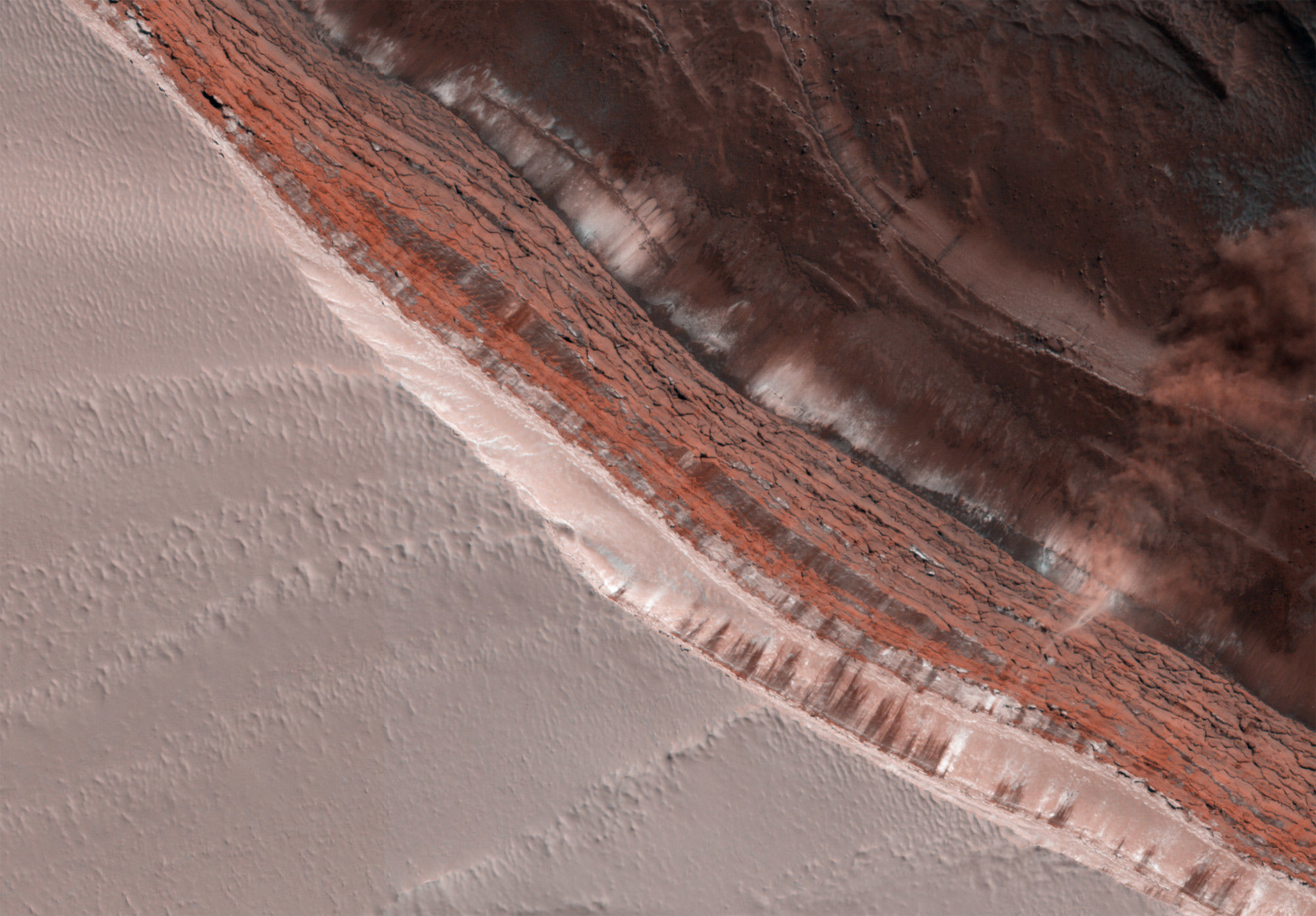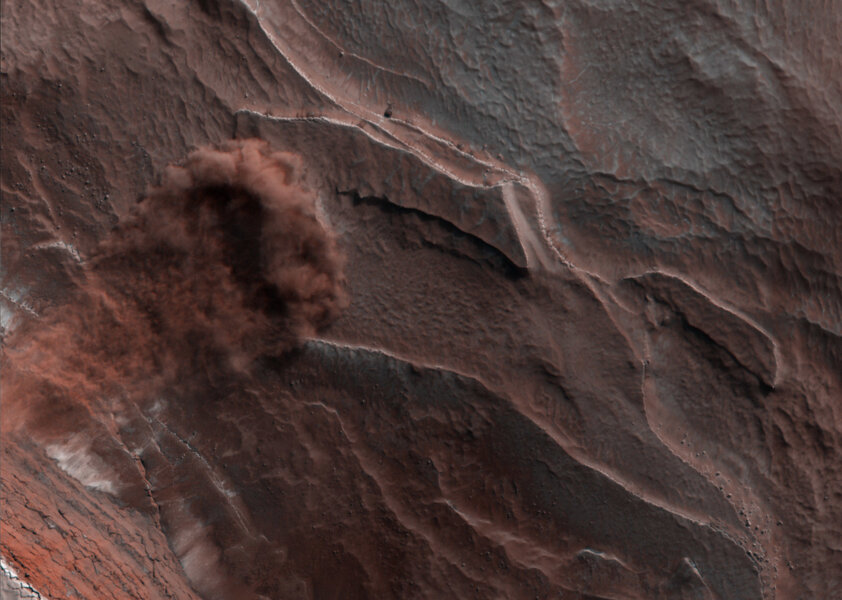Create a free profile to get unlimited access to exclusive videos, sweepstakes, and more!
Here's why you shouldn't stand at the base of a Martian cliff in spring

You don't tug on Superman's cape. You don't spit into the wind. You don't pull the mask off the ol' Lone Ranger and you don't stand at the bottom of a tall south-facing Martian cliff near the north pole when spring arrives.
I think that's how the song goes. Either way, it's good advice.
Here's why. The north pole of Mars has an ice cap with some complex features. There's a relatively permanent deposit (called a basal unit) of sand and dust embedded in water ice that's a kilometer or so thick. On top of that is the polar layered deposit, which is what it sounds like: Zillions of layers of ice with some dust mixed in, probably deposited seasonally layer-by-layer. There's also a thin layer of carbon dioxide ice that gets deposited every winter and which sublimates (turns directly to gas) every spring and summer.
Around the north pole are canyons where the layered deposits are exposed. High-resolution images show these layers in some detail, and they may be clues to the past climate of Mars, like pages in a book.
These images also sometimes catch a surprise. In the spring, as the temperature warms and sunlight hits these cliff faces more squarely, the ice in them weakens. This can cause small landslides: Avalanches, if you will. These are pretty ephemeral events, lasting only seconds or minutes, but here's the fun bit: The HiRISE camera on the Mars Reconnaissance Orbiter takes lots of images.
So, just by chance, sometimes it catches these avalanches in the act!
Wow!
This image was taken on May 29, 2019 (the high-resolution version is here), and is centered 84° north (just a few hundred kilometers from the north pole) and 120° west. There's a cliff there about 500 meters tall, and given that the vernal equinox was just on March 23, things are warming up there. Some dust and rocks dislodged and fell down the cliff face, creating that gorgeous wave of dust expanding along the cliff's base (the cliff itself is in the lower left corner, with just a bit of the Martian ground at the top of the canyonin the extreme corner).
Here's a fun thing: The image is a combination of blue, red, and infrared images, each taken about 50 milliseconds apart and then combined later back here on Earth to make the color photo. But, as the Mars Curiosity rover's Engineering Camera team leader Doug Ellison noted, if you look at the three frames individually, you can actually see the avalanche fan spreading out over the short time between exposures!
Using that info he calculates the speed of the front of the plume is roughly 20 meters per second, or 72 kilometers per hour — slower than highway speeds, but still pretty fast. Doing a little algebra, I find the time it takes a rock to fall from the top of that cliff to the base (ignoring air resistance, which on Mars is an OK approximation) is 16 seconds, and it would hit at 60 meters per second. If it fell from partway down the cliff face it would be moving more slowly, so that fits.
And hence the title of this article.
That image is a small part of a much larger swath taken by HiRISE, and in another part a little bit farther down there's a second avalanche happening at the same time:
You can see some feathery white material that looks like it's still falling, and the longer fan extending right out of the frame of the image. In this shot you're looking very nearly straight down the cliff (the top and surface are at the lower left), and you can see the layers making up the canyon walls. As in the earlier image, the ground at the base of the cliff is also layered, eroded into odd shapes by the winds (and possibly avalanche debris moving along it).
I've written about Mars avalanches before — including one triggered by a small asteroid impact — and I'm always amazed by them. They are a stunning reminder that Mars is not a dead, static world, but very much an active one. It's worth keeping an eye on it as constantly as we can to see what it's up to.




























